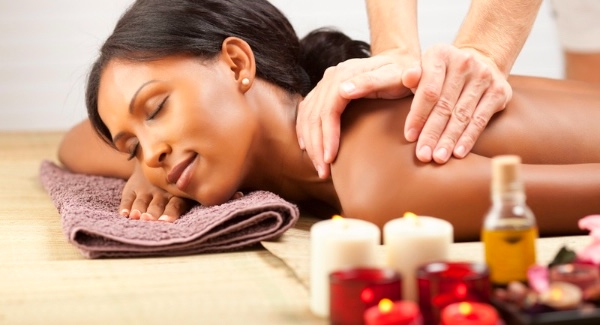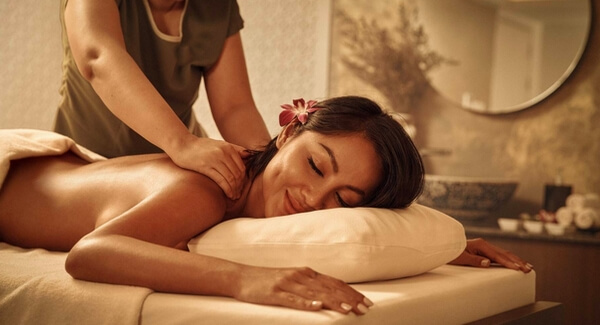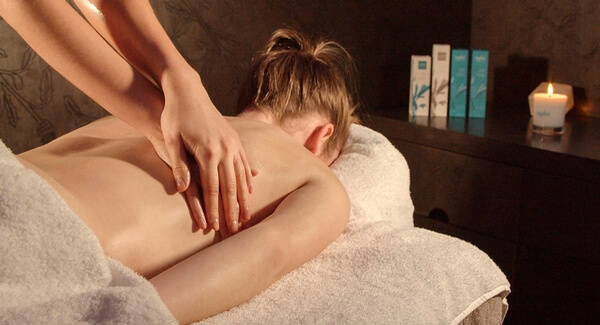Global Spa Trends: Inclusive Massage Practices & Diverse Offerings
The global spa and wellness industry is experiencing a transformative evolution in 2025, moving beyond traditional luxury paradigms to embrace genuine inclusivity and celebrate human diversity. According to the Global Wellness Summit, the wellness industry is projected to reach $1.4 trillion by 2027, driven by an unprecedented demand for personalized, culturally sensitive, and accessible wellness experiences that serve all communities.
From Exclusivity to Universal Accessibility
The modern spa industry is undergoing a profound shift from its historically exclusive nature toward creating welcoming environments for people of all backgrounds, body types, and wellness needs. Research from American Spa Magazine indicates a 67% increase in demand for inclusive wellness practices as consumers seek authentic experiences that reflect their diverse identities and preferences.
This transformation is particularly significant as studies show that historically marginalized communities have been underrepresented in massage therapy, with only 5.4% of massage therapists identifying as African-American despite representing 13.4% of the U.S. population. Forward-thinking establishments are now actively addressing these disparities through comprehensive inclusivity initiatives.
Key Inclusive Practice Innovations:
- Gender-Neutral Facilities: Implementation of non-gendered changing rooms and treatment spaces that ensure comfort for all clients
- Culturally Responsive Care: Training programs that educate therapists on cultural nuances, communication styles, and diverse approaches to wellness
- Adaptive Treatment Options: Customized services accommodating various mobility needs, comfort levels, and therapeutic preferences
- Diverse Marketing Representation: Promotional materials reflecting authentic diversity in age, ethnicity, body types, and abilities
- Multilingual Services: Offering consultations and services in multiple languages to better serve diverse communities
- Accessibility Features: Wheelchair-accessible facilities, adjustable treatment tables, and modified techniques for various physical needs
Current Industry Statistics
The massage therapy industry has seen remarkable growth in inclusivity initiatives. The American Massage Therapy Association reports that 74% of massage schools now include diversity and cultural competency training in their curricula, compared to just 23% in 2019. This shift reflects the industry's commitment to serving increasingly diverse client populations.
Furthermore, spa facilities implementing inclusive practices have seen a 45% increase in client retention rates and 38% growth in new client acquisition, demonstrating that inclusivity is not just ethically important but also financially beneficial for businesses.
Global Pioneers in Inclusive Wellness Practices
The movement toward inclusive massage and spa practices is gaining momentum worldwide, with different regions leading innovative approaches to accessibility and cultural competency:
Europe & Scandinavia
Nordic countries are pioneering gender-neutral spa environments and hydrothermal experiences that prioritize sustainability and universal design. The Global Wellness Institute reports that Scandinavian spas are leading water conservation initiatives while maintaining inclusive access.
Notable Examples: Swedish spa chains like Yasuragi and Norwegian wellness centers have implemented fully accessible facilities with sign language interpreters available upon request, and culturally diverse staff representing over 15 different nationalities.
North America
Urban centers across the United States and Canada are experiencing a surge in specialized wellness spaces that cater to diverse communities, with emphasis on trauma-informed care and culturally sensitive practices.
Innovation Focus: Cities like Toronto, San Francisco, and New York have seen the establishment of community wellness centers offering sliding-scale pricing, multilingual services, and specialized programs for veterans, seniors, and individuals with disabilities.
Asia-Pacific
Australia and New Zealand lead in eco-conscious wellness retreats that incorporate indigenous healing traditions while ensuring accessibility for travelers of all backgrounds and abilities.
Cultural Integration: Many facilities now offer traditional Aboriginal healing practices alongside modern massage therapy, with indigenous practitioners providing culturally authentic experiences while respecting traditional protocols.
Middle East & Africa
The MENA region's wellness market, valued at over $46 billion, is incorporating traditional healing practices with modern inclusive approaches, particularly in luxury resort destinations.
Emerging Trends: Dubai and Marrakech have become hubs for wellness tourism that combines traditional hammam experiences with contemporary spa services, offering culturally appropriate treatments for diverse international clientele.
Evolving Client Expectations: Transparency, Respect, and Personalization
Today's wellness consumers demand more than superficial treatments—they seek meaningful, authentic experiences rooted in mutual respect and transparent communication. Industry research indicates that 88% of spa clients prioritize therapist cultural competency and inclusive communication practices.
Essential Client Priorities Include:
- Comprehensive Staff Training: Therapists educated in diversity awareness, trauma-informed care, and respectful communication across cultural differences
- Detailed Service Information: Clear descriptions of therapist qualifications, treatment approaches, and facility accessibility features
- Consent-Centered Sessions: Explicit permission sought throughout treatments, with clients empowered to direct their comfort levels
- Multilingual Support: Services and intake materials available in multiple languages to serve diverse communities
- Flexible Scheduling: Accommodation for religious observances, work schedules, and family responsibilities
- Payment Options: Sliding scale fees, insurance acceptance, and community partnership programs to ensure accessibility
What Clients Are Saying
Recent surveys indicate that clients who receive culturally competent massage therapy report 73% higher satisfaction rates and are 2.3 times more likely to recommend services to others. Key feedback themes include:
- Feeling genuinely welcomed and understood
- Appreciation for therapists who ask about cultural preferences
- Positive responses to facilities that display inclusive imagery and multilingual signage
- Higher comfort levels when therapists demonstrate cultural awareness
Specialized Treatment Offerings for Diverse Needs
The expansion of inclusive massage therapy extends to specialized treatments designed to address unique physical and emotional wellness needs across different populations:
Post-Surgical and Medical Massage
Specialized treatments supporting recovery from various medical procedures, with therapists trained in post-operative care and sensitivity to surgical sites. These services often require additional certification and coordination with healthcare providers.
Popular Applications: Lymphatic drainage, scar tissue management, oncology massage, and rehabilitation support for joint replacement patients.
Women-Only Massage Services
Female therapists provide treatments in private, culturally sensitive environments that honor religious and cultural preferences for same-gender care. This service is significant for Muslim, Orthodox Jewish, and other faith communities.
Cultural Considerations: Modified draping techniques, prayer time accommodations, and understanding of cultural taboos around touch and modesty.
Accessibility-Focused Therapies
Adaptive massage techniques designed for clients with mobility limitations, chronic conditions, or neurodiverse needs, emphasizing comfort and therapeutic benefit. Therapists receive specialized training in working with various disabilities.
Adaptive Features: Wheelchair-accessible tables, sensory-friendly environments, communication boards, and modified techniques for conditions like autism, cerebral palsy, and chronic pain syndromes.
Culturally Informed Healing
Integration of traditional healing modalities from various cultural backgrounds, provided by trained practitioners who understand the cultural context and significance. This includes Ayurvedic massage, Traditional Chinese Medicine techniques, and indigenous healing practices.
Authentic Practices: Collaboration with cultural communities to ensure respectful and accurate representation of traditional healing methods.
Senior-Focused Wellness
Gentle massage techniques specifically designed for older adults, addressing common concerns like arthritis, circulation issues, and social isolation. The senior wellness market has grown by 67% as baby boomers seek specialized care.
Specialized Approaches: Chair massage for those who cannot lie down, gentle pressure techniques, and longer session times to accommodate slower movement.
Teen and Young Adult Services
Age-appropriate massage therapy addressing the unique needs of younger clients, including sports injury recovery, stress management, and body image support. Mental health-focused massage for teens has increased by 89% in the past two years.
Youth-Centered Care: Parent consultation protocols, age-appropriate communication, and stress-reduction techniques for academic and social pressures.
Technology-Enhanced Inclusive Wellness
The integration of technology in spa and massage practices has increased by 150% in 2025, with innovations specifically designed to enhance accessibility and personalization:
- AI-Powered Personalization: Biometric data analysis to customize treatments for individual physiological needs
- Virtual Reality Meditation: Immersive relaxation experiences that accommodate various sensory preferences
- Digital Accessibility Tools: Apps and platforms designed with universal design principles for ease of booking and communication
- Wearable Integration: Real-time monitoring to optimize treatment pressure, duration, and techniques
- Language Translation Apps: Real-time translation services facilitating communication between therapists and non-English speaking clients
- Sensory Enhancement Tools: Customizable lighting, sound, and aromatherapy systems accommodating different sensory needs
Professional Development and Industry Standards
Leading massage therapy organizations are implementing comprehensive training programs to ensure practitioners can serve diverse clientele effectively. The Massage Therapy Foundation reports that continuing education in cultural competency has become a standard requirement in many states.
Essential Professional Adaptations:
- Mandatory Diversity Training: Ongoing education in cultural sensitivity, implicit bias awareness, and inclusive communication
- Universal Design Implementation: Facility modifications ensuring accessibility for clients with various physical needs
- Staff Diversity Initiatives: Recruitment and retention programs to increase representation within the massage therapy profession
- Community Outreach Programs: Partnerships with community organizations to improve access to massage therapy in underserved populations
- Trauma-Informed Care Training: Education on recognizing and appropriately responding to trauma responses during treatment
- Language Accessibility: Staff training in working with interpreters and non-English speaking clients
Emerging Certification Programs
Professional organizations are developing specialized certifications to meet diverse client needs:
- Cultural Competency Certification: 40-hour programs covering cross-cultural communication and culturally sensitive treatment approaches
- Accessibility Specialist Training: Certification in adaptive massage techniques for clients with disabilities
- Trauma-Informed Bodywork: Specialized training for working with survivors of trauma, abuse, or PTSD
- Medical Massage Specialization: Advanced training for post-surgical and chronic condition management
Digital Platforms and Service Discovery
As inclusivity becomes central to wellness consumer decisions, digital platforms are evolving to help clients find appropriate, culturally competent massage services. Advanced filtering systems enable users to search by therapist qualifications, language spoken, cultural background, and specialized training.
Social media and peer review platforms play crucial roles in building trust within diverse communities, with authentic testimonials and recommendations serving as valuable resources for identifying welcoming, professional massage therapy services.
The Future of Inclusive Wellness
The trajectory of the global spa and wellness industry points toward an increasingly inclusive future where accessibility and cultural competency are not optional additions but fundamental requirements for professional practice. Success in this evolving landscape will belong to practitioners and establishments that prioritize genuine inclusivity, continuous education, and community engagement.
Whether serving clients seeking culturally affirming massage therapy, individuals requiring specialized post-medical care, or anyone desiring respectful, professional wellness services, the industry's commitment to inclusive practices is establishing new standards for excellence and accessibility.
The future of massage therapy lies in thoughtful inclusivity that serves every individual with dignity, respect, and professional excellence. As diverse communities increasingly seek services that authentically reflect their needs and values, the most successful practitioners will be those who embrace evolution, welcome all clients with expertise and cultural competency, and provide personalized care that honors each person's unique wellness journey.



